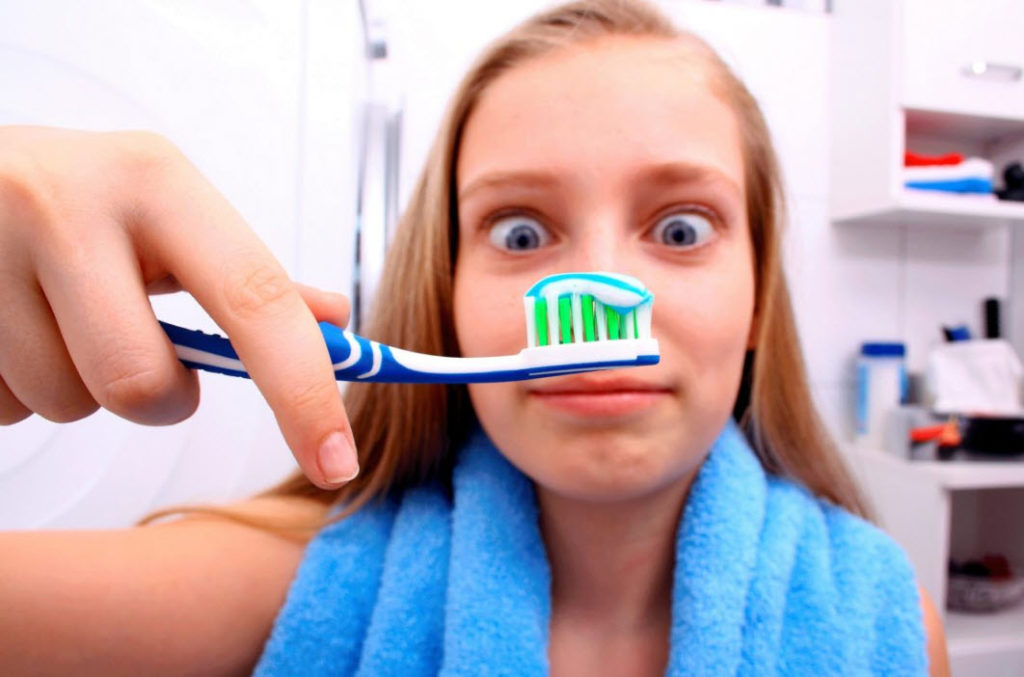Even in this technological age, where the introduction of information technology is happening faster than the development of innovations in other areas, many people are prejudiced against the recommendations of dentists, preferring to trust highly questionable claims that originated centuries ago. Is an ordinary toothbrush and toothpaste enough for hygiene, are sweets bad for your teeth, is chewing gum good for you after eating, should you treat a baby tooth? There are a lot of myths swarming around these questions. So which dental myths are true and which are not?

Myth 1: Baby teeth can be left untreated
Milk teeth need to be taken care of just as carefully as permanent teeth for proper permanent dentition and overall dental health. Early loss of a baby tooth not only affects your diction and chewing, but the jaw doesn’t grow correctly, when permanent teeth erupt they lack space, and an incorrect bite is formed. Therefore, it is not only necessary, but also compulsory to treat baby teeth.
Myth 2: Sweets harm your teeth
This is true. Frequent consumption of sweets increases the risk of tooth decay. Sugar changes the pH environment in your mouth to a more acidic one, which negatively affects enamel, making it more vulnerable to pathogenic bacteria. But even giving up sweets completely doesn’t guarantee you won’t have 100% of your dental problems. Therefore, everything is good in moderation, and a simple prevention method is to brush your teeth or rinse your mouth thoroughly every time after eating.
Myth 3: Apples can replace brushing your teeth
This is not exactly a true statement. Apples do clean and strengthen your teeth, but they cannot replace a full-fledged hygienic cleaning.
Myth 4: Sugar-free sparkling water is safe for your teeth
Any carbonated beverage contains acid that negatively affects the enamel layer, which increases the effectiveness of bacterial attacks on dental tissues. Drinking sparkling water systematically changes the pH-environment of your mouth to a more acidic one. The body does not keep up with producing enough saliva to neutralize the acidic environment. A healthier alternative to maintaining the body’s water balance is regular water, milk, and vegetable juice.
Myth 5: Chewing gum is good for your teeth
This is only partially true. Sugar-free chewing gum helps to clean teeth after meals, restores normal pH in the mouth, and promotes digestion. It is useful to chew it for 2 to 3 minutes after a meal. But chewing gum for a long time is harmful, not beneficial. It promotes constant secretion of gastric juice, which is fraught with GI problems. It causes excessive strain on the jaw and can lead to overstrain of the chewing muscles and TMJ disorders.
Myth 6: As long as the tooth does not hurt, you do not need a dentist.
In this case, you need to remember the rule that disease is easier to prevent than to cure. It also applies in dentistry. Most dental pathologies do not manifest themselves at the early stage. But a skilled dentist can detect changes during examination and immediately take measures, preventing the development of the disease. Even if you have no complaints, you should visit the dentist at least twice a year. It is easier and cheaper to eliminate the problem early on than to treat a serious problem with many complications.
Myth 7: Flossing makes interdental spaces wider
Flossing keeps your teeth and gums healthy. They help remove food particles, bacterial plaque from places where a toothbrush and irrigator can’t reach-the spaces between your teeth. This reduces the risk of tooth decay on the contact surfaces of the teeth. The width of interdental spaces is not affected by flossing.
Myth 8: A toothbrush is enough to clean your teeth
Wrong. A toothbrush and toothpaste are not enough to properly clean your teeth. But adding a special interdental toothbrush or floss, will ensure sufficient hygiene. Teeth are cleaned in a sweeping motion, from the gums to the incisal edge. Flossing cleans between the teeth. The irrigator supplies fluid at a pressure which removes residual bacteria, gently massages the gum and improves blood circulation. This comprehensive care is sufficient for daily hygiene. Professional hygienic cleaning by your dentist twice a year will help keep your teeth and gums healthy and prevent tooth decay and other problems.
Myth 9: A bite cannot be corrected until childhood
Correction of bite is possible at any age. In the arsenal of modern orthodontics there are many methods and techniques that can safely align teeth and create a beautiful smile. Of course, the younger the patient, the faster and easier the process of moving the teeth in a row and correction of bite. At an older age, treatment will take longer. But there is no upper age limit for orthodontic treatment. It is important that the patient retains a sufficient number of teeth. If large segments of dental units are missing, the corrective apparatus (braces, eliners) simply will not have anything to fit.
